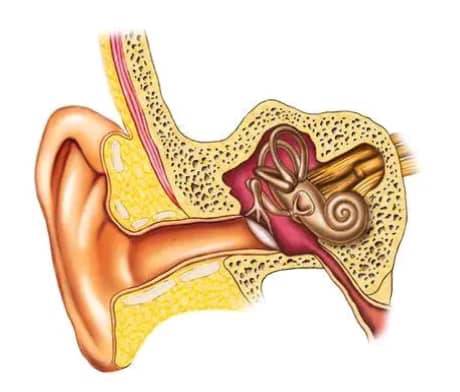Introduction
 |
| Pneumonia |
Describe pneumonia.
Infection of either or both lungs is known as pneumonia. Pneumonia can be caused by a variety of tiny organisms, including bacteria, viruses, and fungi.
Pneumonia is typically more dangerous when:
1. Babies and young kids.
2. Elderly folks, or those who are 65 or older
3. Those with other medical issues including diabetes, heart failure, or COPD
4. People whose immune systems are compromised due to illnesses or other circumstances.
What signs of pneumonia are there?
 |
| symptoms of pneumonia |
1. An extended cough of more than ten days.
2. (Usually higher than 101°F) fever
3. Breathing problems or shortness of breath, particularly while lying down or climbing stairs.
4. Wheezing, heartburn, and other symptoms like chest pain that don't go away with rest.
5. You should visit a doctor right away if you experience any of these symptoms for longer than two weeks!
What kind of germ has the biggest chance to cause pneumonia? The most common cause of pneumonia in children is streptococcus bacteria (Strep); Hemophilus influenzae type b (Hib) is the second most common cause of bacterial pneumonia. The respiratory syncytial virus is the most common viral cause of pneumonia. Pneumocystis jiroveci is one of the most common causes of pneumonia in infants with HIV, accounting for at least 25% of all pneumonia-related deaths in these infants. Aspiration pneumonia is another type of pneumonia that can occur when a person inhales food particles that build up to cause inflammation and result in pneumonia. It is common in stroke patients and some other debilitated persons. As a result, after a stroke, certain foods should be avoided. Treatment for pneumonia The etiology, the intensity of your symptoms, your age, and your general health all affect how you should be treated for pneumonia. Oral antibiotics are routinely used in the healing of many diseases at home. People who have more serious symptoms or underlying medical conditions could require hospital treatment. Before they can resume their regular schedules, it can take them three weeks or longer. Pneumonia can cause fatigue that lasts for a month or more.
You can take the following measures to help prevent pneumonia: 1. Get immunized against the flu annually. After contracting the flu, some people get bacterial pneumonia. 2. Consider receiving a pneumococcal vaccine. 3. Enforce a strong standard of cleanliness. 4. Smoking is not a good idea. 5. Uphold a healthy way of living. 6. Stay away from sick people. How does pneumonia cause death? You typically require oxygen to survive. Attempt to hold your breath. Could you even maintain that for a half-hour? To survive, you need oxygen. Pneumonia damages the lungs, making it difficult for the body to get oxygen. If you try to walk across the floor and need more oxygen than you're getting, you pass out. You need more oxygen now that you've injured yourself on the floor (for repair, etc.). If you don't get enough oxygen, you expire. To die from lack of oxygen, you don't even need to collapse. If your lungs stop working properly, you die. The doctors can treat it with a variety of methods, such as antibacterial medication and higher oxygen levels. Can a bird give you pneumonia? They can, yes. Multiple diseases that can be spread to humans are reservoirs in birds (zoonoses). Since they may move into regions where people live with ease due to their high mobility, animals like bats and birds may pose a larger danger of zoonotic transmission than other species.
Examples of communicable diseases in birds that affect pigeons, geese, starlings, and house sparrows include: Histoplasmosis A potentially dangerous respiratory condition is histoplasmosis. It is caused by a fungus that develops in dried bird droppings. Candidiasis Pigeons can carry the yeast or fungus infection known as candidiasis. The ailment impacts the urogenital tract, particularly the vagina, as well as the skin, mouth, respiratory system, intestines, and bladder. It causes itching, soreness, and discharge in women, and it is a developing issue. St. Louis encephalitis Normal symptoms of St. Louis encephalitis, an infection of the neurological system, include fatigue, headaches, and fever. It might potentially cause death, paralysis, or a coma. All age groups are susceptible to St. Louis encephalitis, however people over 60 are particularly at risk for death. Mosquitoes that have eaten on sick house sparrows, pigeons, and house finches carrying the Group B virus that causes St. Louis encephalitis propagate the disease. Salmonellosis Pigeons, starlings, and sparrows have all been linked to salmonellosis, which often manifests as "food poisoning". Disease-causing bacteria can be found in bird droppings, and dust from these droppings can enter air conditioners and ventilators, contaminating food and cooking surfaces in homes, restaurants, and food processing facilities. can do Cryptococcosis The yeast that is present in the intestinal tracts of pigeons and starlings causes cryptococcosis. The condition often begins as lung disease and can damage the central nervous system. The fungus is likely to be found in these places because of mats, cupolas, eaves, schools, offices, warehouses, mills, warehouses, park structures, signs, etc. E.coli. There is E. coli 0157:H7 in cattle. The E. coli pass right through the birds as they peck on cow manure, and the bird droppings may then fall on or into a food or water source.

Treatment of pneumonia 
Pneumonia

.jpg)

.jpg)


